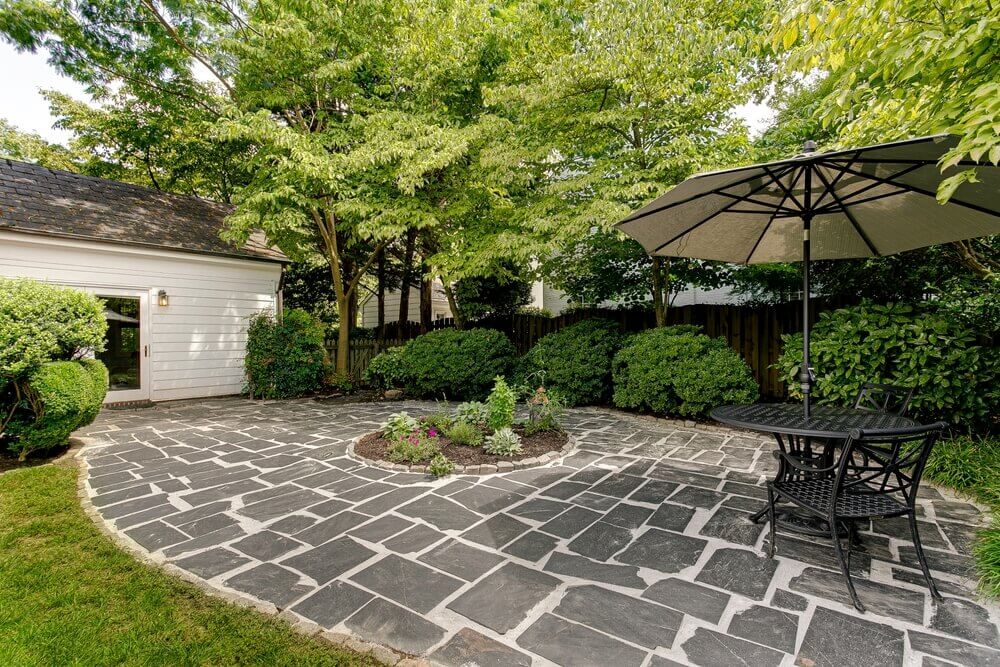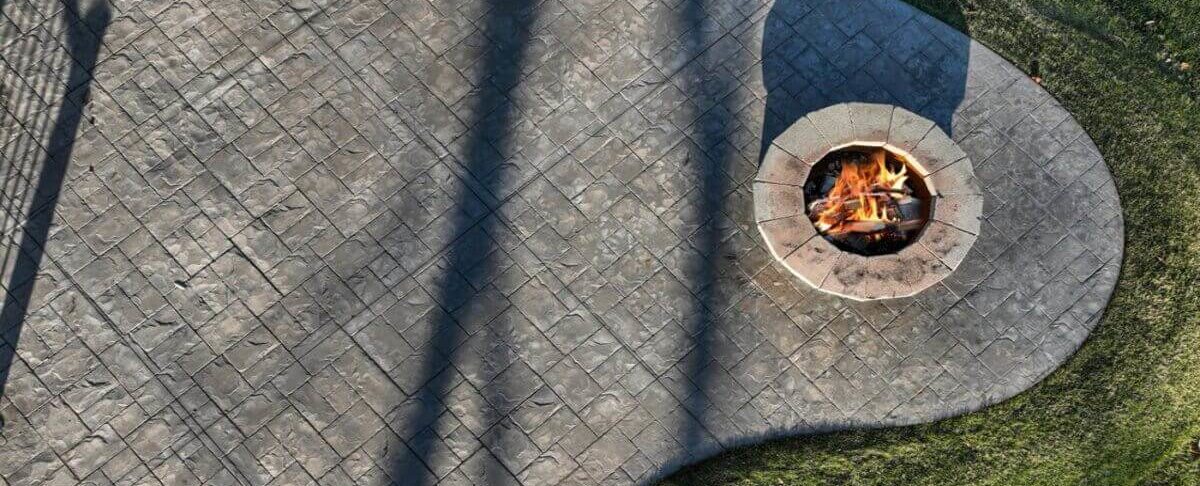Your patio sets the tone for your outdoor living space, and choosing the right material is a crucial step. Concrete offers durability and versatility, with two popular options: stamped concrete and regular concrete. Each has unique features that cater to different needs, making it important to understand their characteristics before deciding which suits your project.
This guide will help you compare the benefits, costs, and maintenance requirements of stamped and regular concrete to make the best choice for your patio.
What Is Stamped Concrete?
Stamped concrete is a decorative surface created by imprinting patterns and textures into wet concrete. This technique allows the surface to mimic high-end materials like stone, brick, or wood. Stamped concrete patios are a popular choice for homeowners who want an upscale look without breaking the bank.
Benefits of Stamped Concrete
- Customizable Design Stamped: Offers an extensive range of patterns, colors, and textures. Whether you prefer the natural look of slate or the rustic feel of cobblestone, it can replicate these designs.
- Enhanced Curb Appeal: The aesthetic versatility of stamped concrete adds a luxurious touch to your outdoor space, potentially increasing the value of your home.
- Affordable Luxury: While it looks high-end, stamped concrete is often more budget-friendly than installing real stone or brick.
What Is Regular Concrete?
Regular concrete, or plain concrete, provides a smooth, functional surface without additional texturing or coloring. While it may lack the decorative appeal of stamped concrete, it offers a clean, practical finish that works well for many homes.
Benefits of Regular Concrete
- Cost-Effective Option: Regular concrete is significantly cheaper than stamped concrete, making it ideal for budget-conscious projects.
- Minimal Maintenance: With occasional cleaning and resealing, regular concrete can remain functional and attractive for years.
- Durable and Reliable: Known for its strength, regular concrete withstands heavy use and extreme weather conditions with ease.
Key Differences Between Stamped and Regular Concrete Patios
Appearance and Style
Stamped concrete is the clear choice for homeowners seeking a high-end, customizable look. Its ability to mimic other materials adds a sophisticated touch. Regular concrete, while neat and practical, doesn’t offer the same level of visual interest.
Cost
Regular concrete is the more affordable option, typically costing 25-50% less than stamped concrete. If you’re on a tight budget, this can be a deciding factor.
Installation Time
Stamped concrete takes longer to install due to the added steps of stamping, coloring, and sealing. In contrast, regular concrete is quicker to lay, often completed within a day.
Maintenance Requirements
Both options are durable, but stamped concrete requires regular resealing (every 2-3 years) to maintain its appearance. Regular concrete, on the other hand, is easier to maintain, requiring less frequent resealing.
Longevity
Both types can last decades, but stamped concrete is more prone to surface damage over time due to its intricate finish. Regular concrete, with its simpler surface, is less likely to chip or crack.
Choosing the Right Concrete Patio for Your Needs
Deciding between stamped and regular concrete patios depends on your priorities. Stamped concrete is ideal for those who value design and are willing to invest in upkeep, while regular concrete offers a cost-effective, low-maintenance solution.
Conclusion

Concrete patios are a durable and versatile option for outdoor spaces. Whether you prefer the elegance of stamped concrete or the simplicity of regular concrete, both provide reliable functionality for years to come. To learn more or start planning your project, contact Richfield Concrete today!




